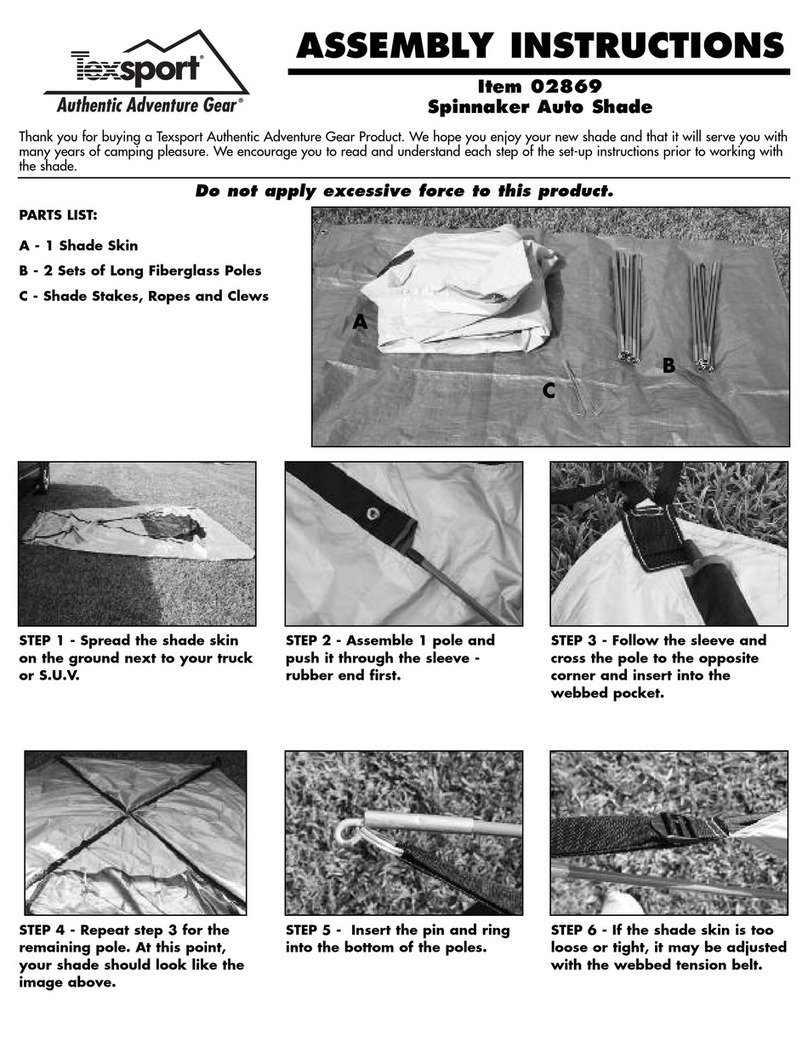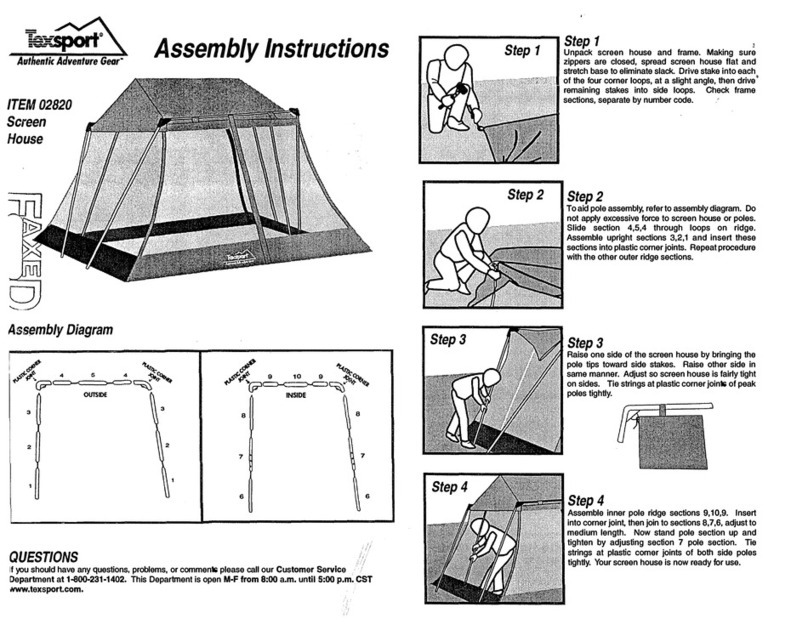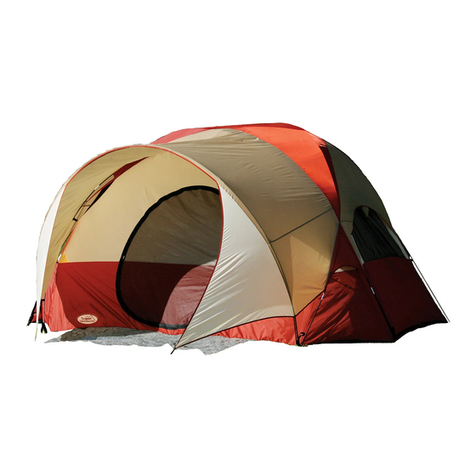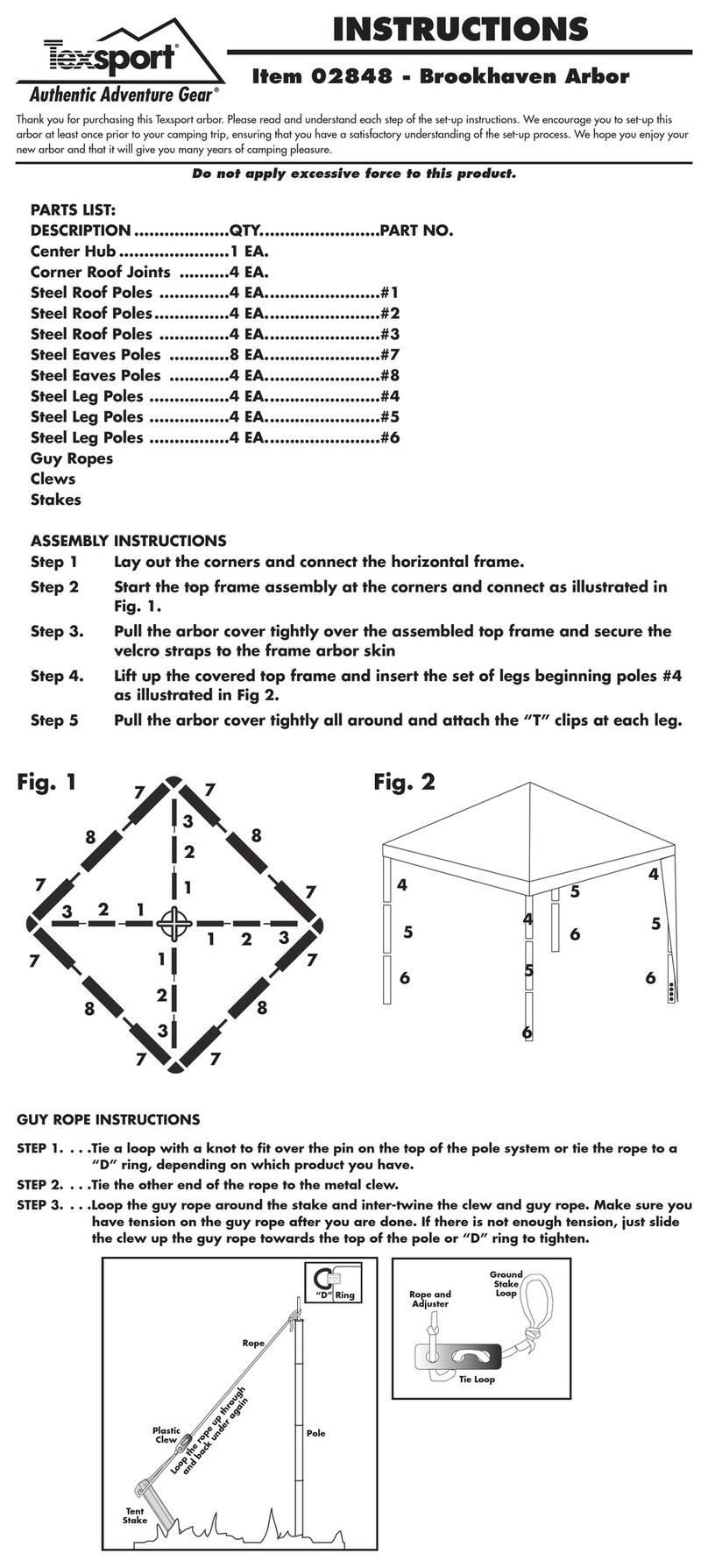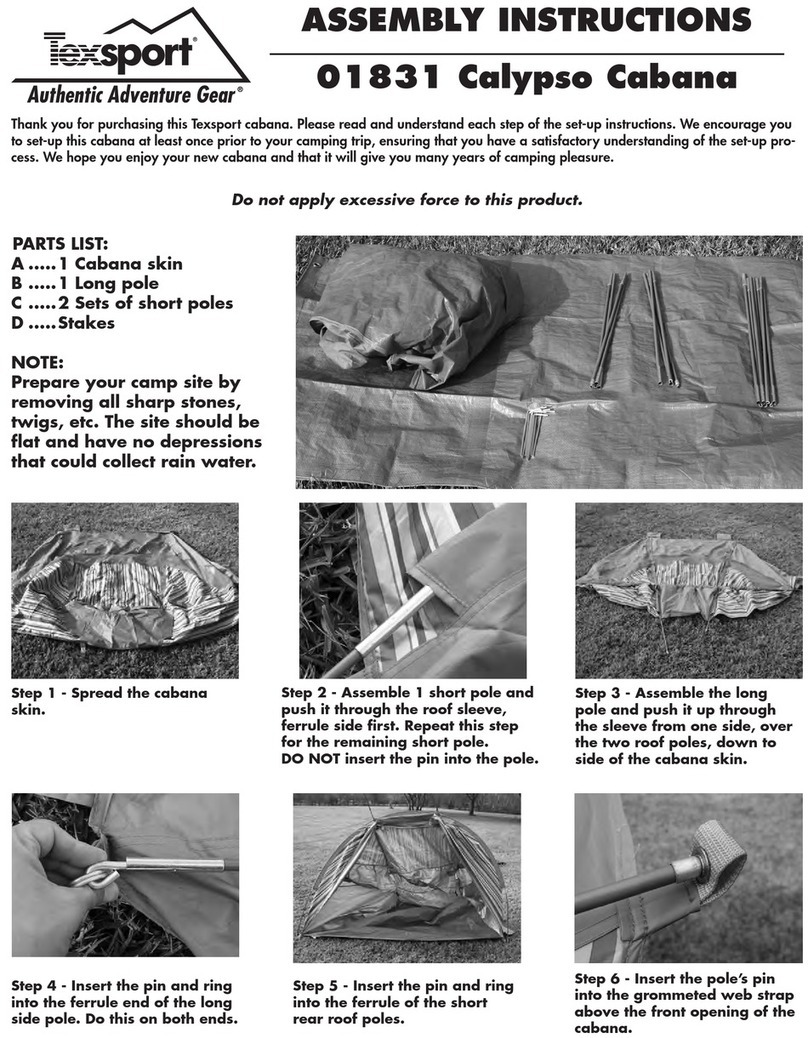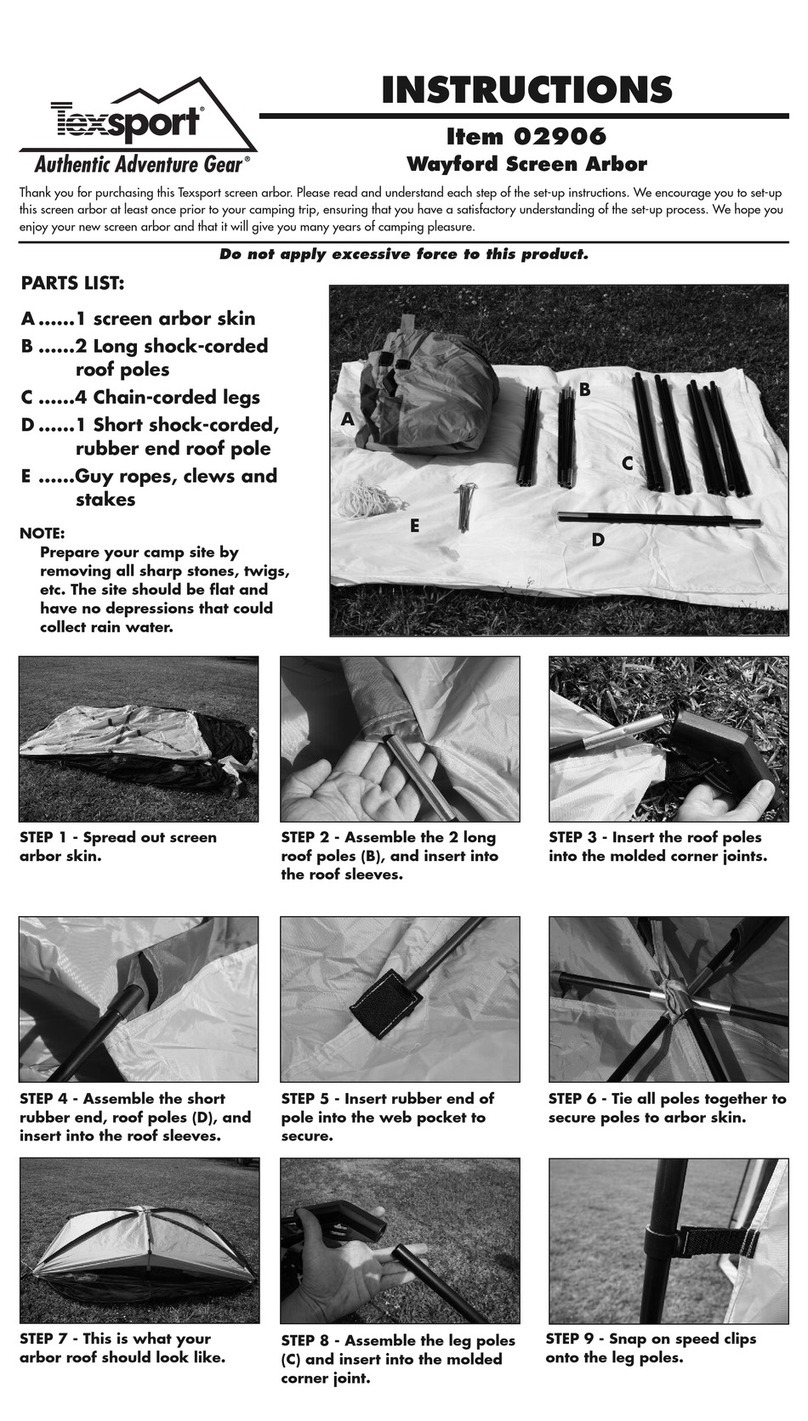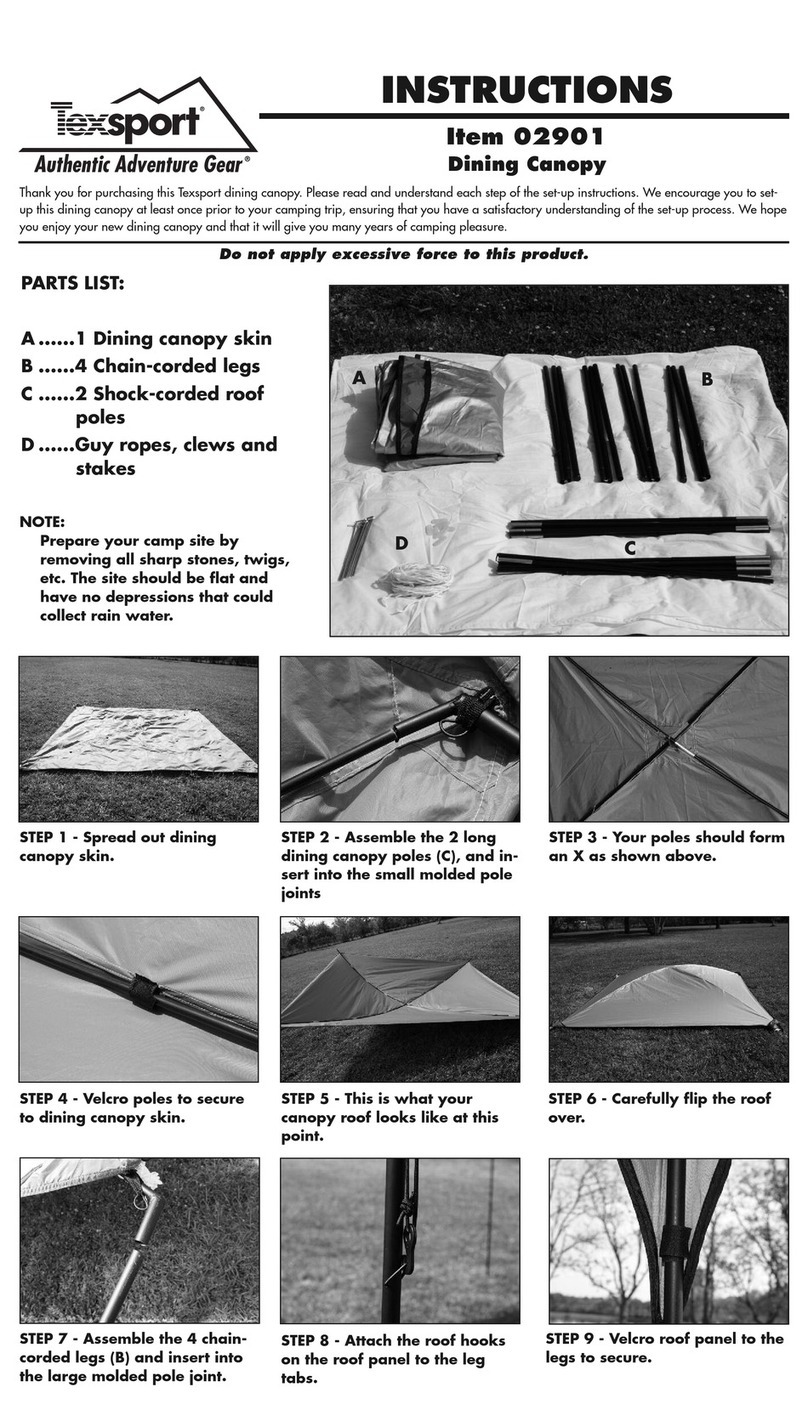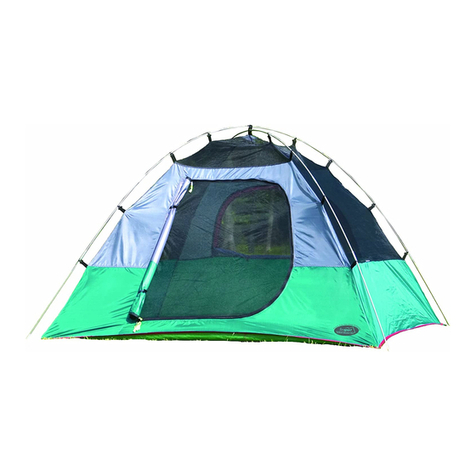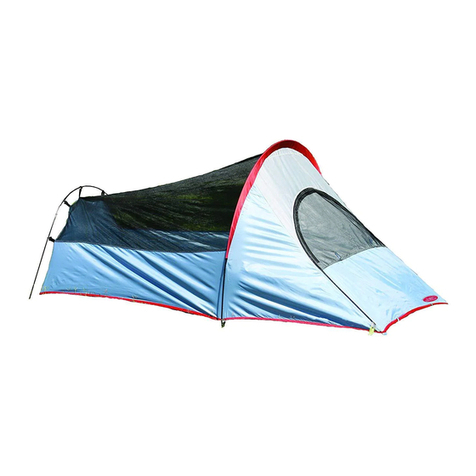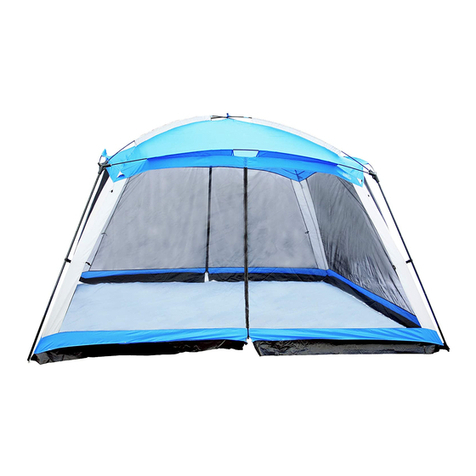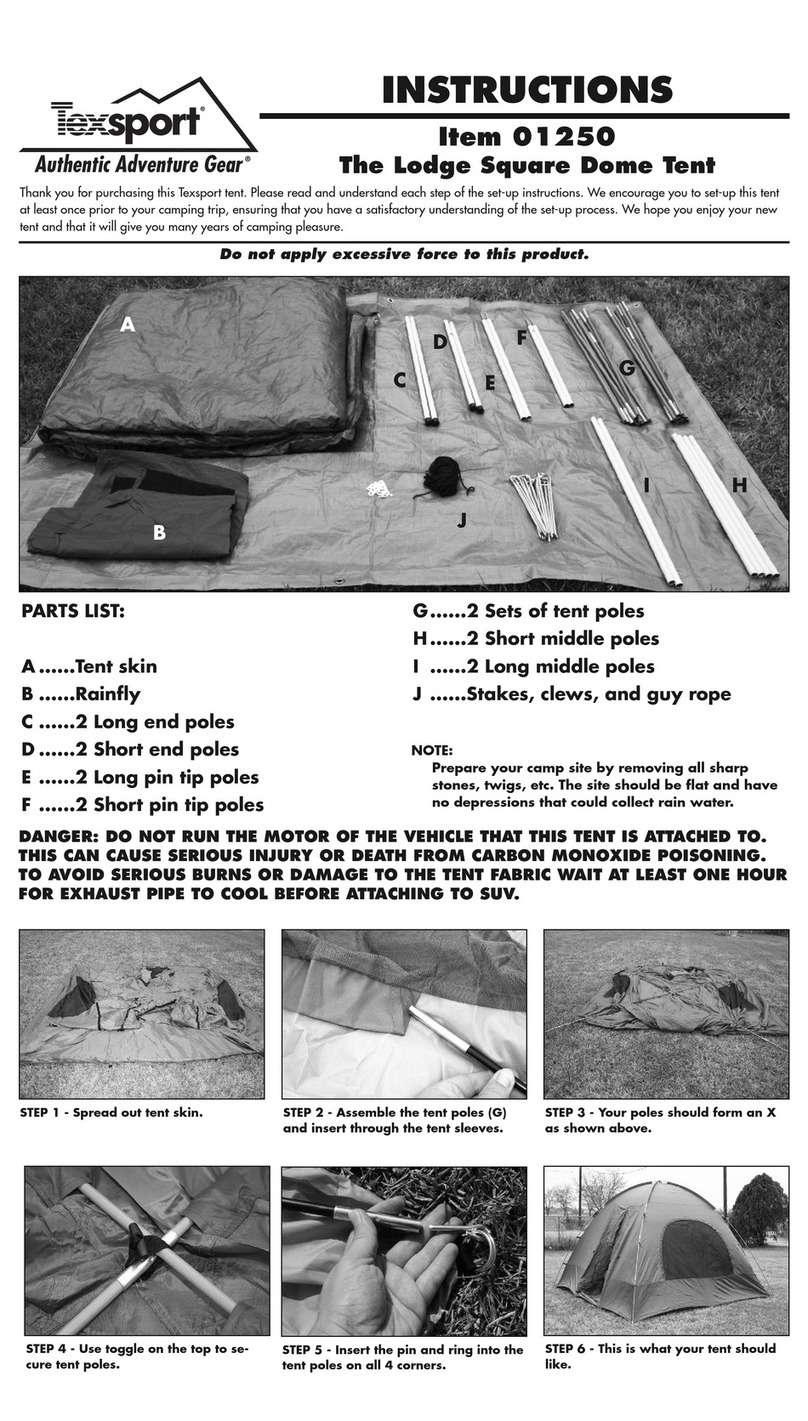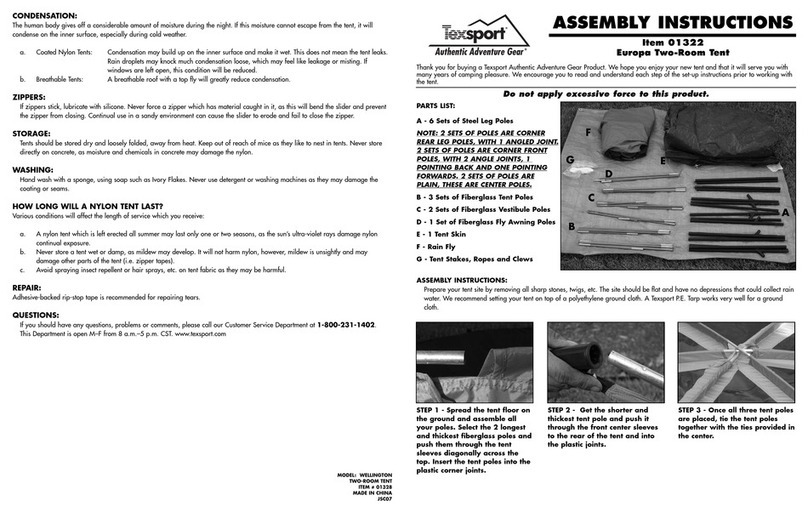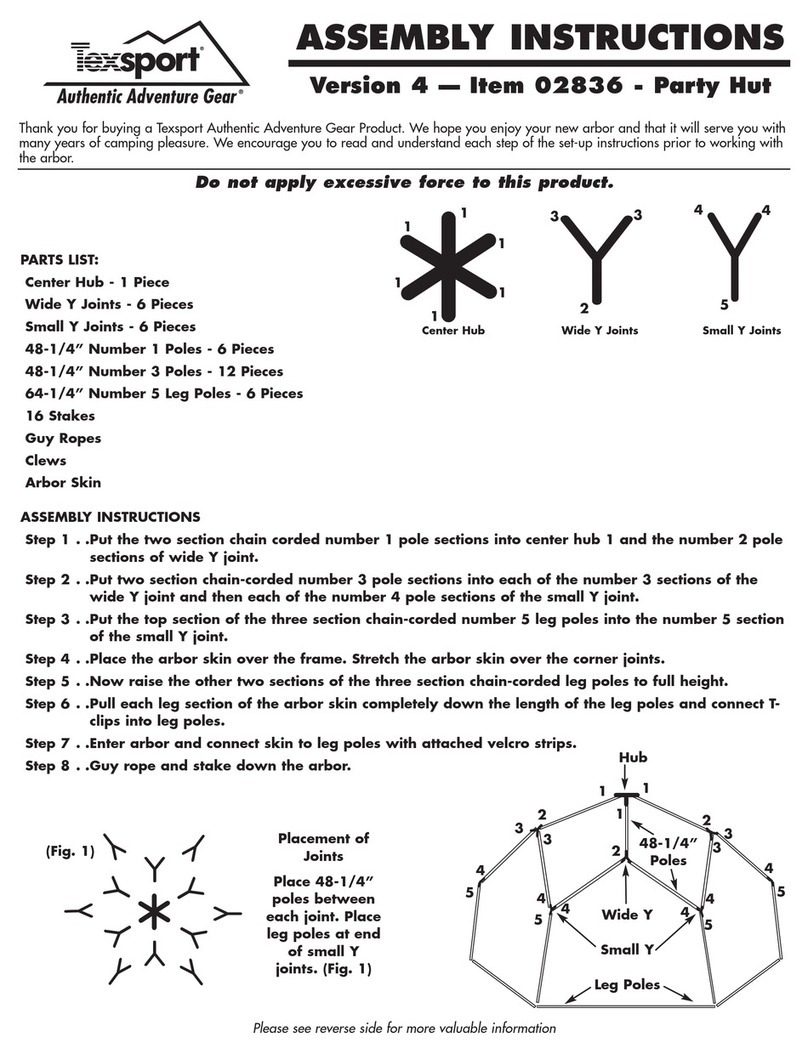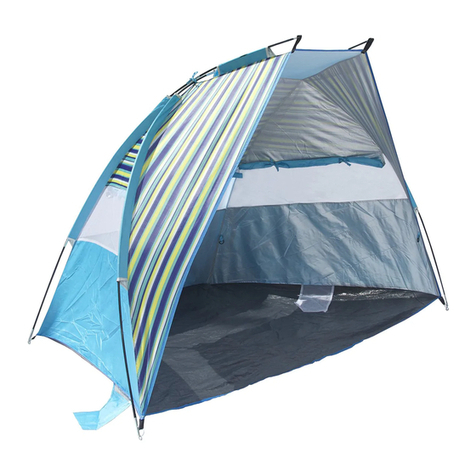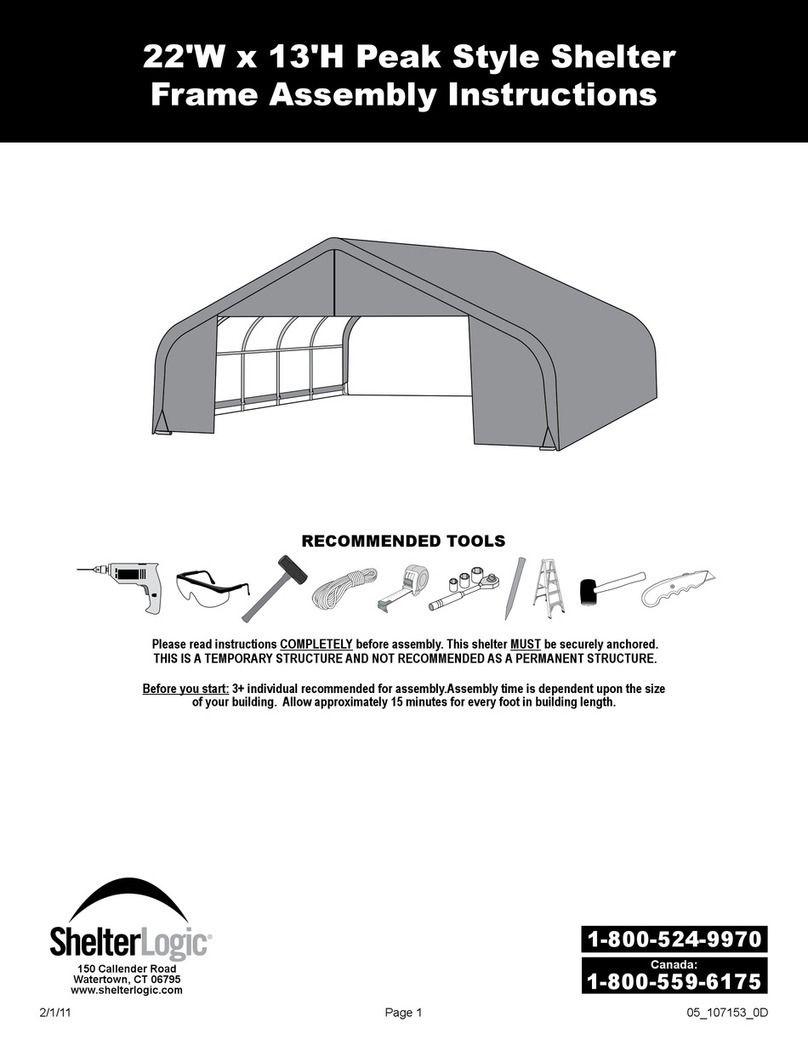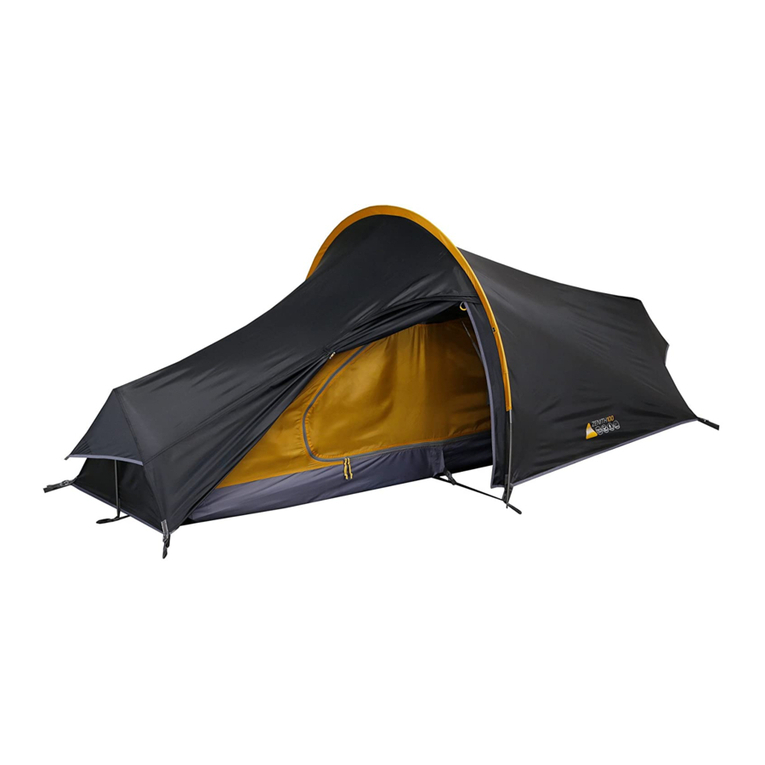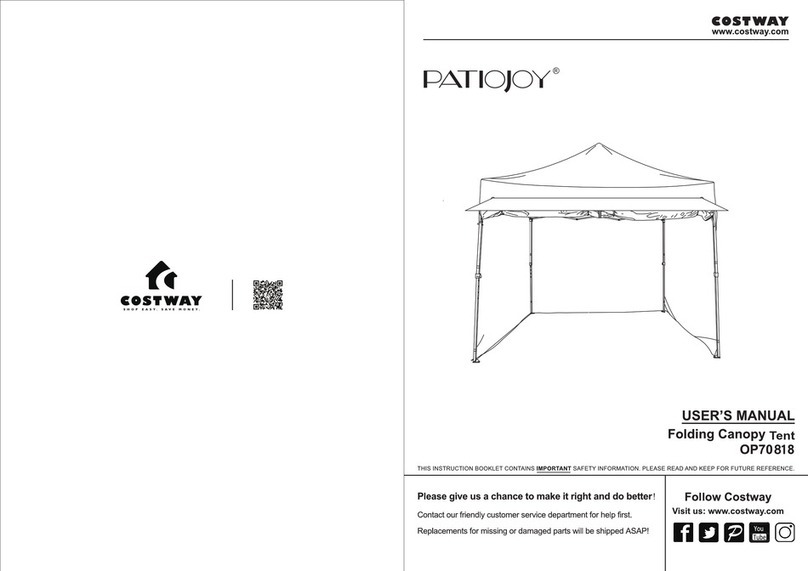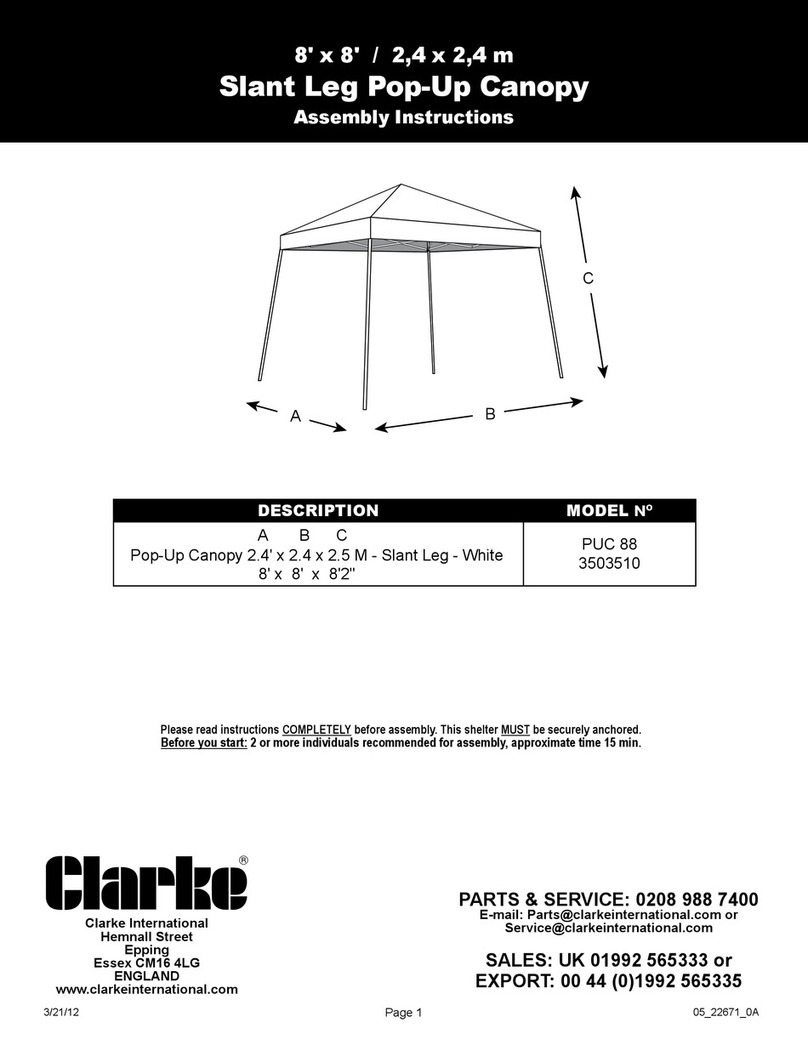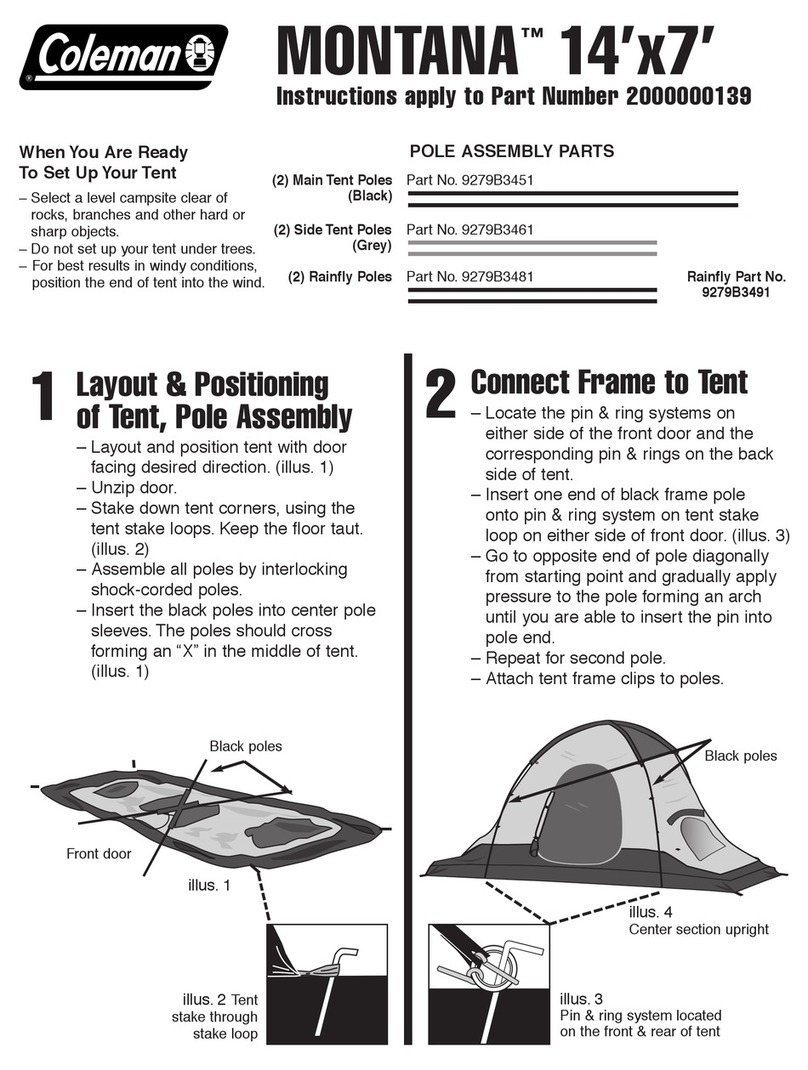
STEP 10 - Guy ropes must be used
to secure your shelter especially in
windy conditions. Insert the guy
rope into clew as shown above.
STEP 11 - Tie the other end of the
guy rope to the top of the frame
pole.
STEP 12 - Loosen the guy rope as
shown to wrap around a stake.
STEP 13 - Stake down the guy
rope.
STEP 14 - Adjust the tension on the
guy rope by sliding the clew up or
down.
STEP 15 - Your shelter is now
ready to use.
WARNING:
Texsport shelter fabri s are flame retardant treated per C.P.A.I.-84 spe ifi ation. However, for your safety, we re ommend that NO OPEN FLAME BE USED IN OR
NEAR YOUR SHELTER.
SOME ADDITIONAL INFORMATION:
Always se ure your shelter (with the shelter stakes in luded). Stake one orner, then stake ea h onse utive orner in a lo kwise rotation. Make sure the shelter remains
tight. Always pla e your shelter a safe distan e from your ampfire - unstaked shelter pla ed upwind of the fire an be blown into the fire. Shelter pla ed downwind of
the fire are often showered with tiny sparks that an burn holes into the lightweight fabri s of your shelter.
WATERPROOFING YOUR SHELTER:
Texsport shelters are made from oated water-repellent fabri s. However, the sewing pro ess, ne essary in all shelter fabri ation, an ause water leakage where the
sewing needles have perforated the fabri in the seams. Without treatment the shelter will leak. Every new shelter needs to be seam sealed to make it water tight. We
re ommend using Texsport Spray Waterproofing/Seam Sealer whi h may be found at your lo al outdoor outfitter or amping store. DO NOT APLY SEAM SEALER TO
ZIPPERS.
STA ES:
All shelters should be staked down. The stakes supplied with your shelter are effe tive for most onditions; however, spe ialized stakes are re ommended in ertain
ases:
a. Sand Stakes: ..............Long broad stakes designed to hold in loose sand.
b. Steel Stakes: ..........Most effe tive in hard, ro ky or frozen soil. These an rust and their sharp edges ould damage the shelter if stored with the shelter. In
............................extremely hard soil a steel rod an be used to make the starter hole.
. Skewer Stakes: ......Lightweight, but less holding power that the standard stakes.
d. Snow Stakes: ........The most ommon method is to bury obje ts with a great deal of surfa e area in the snow i.e. bran hes, aluminum pie plates, stuff sa ks or
............................shelter bags filled with snow and buried: (this may be referred to as the dead man method). Shelters an also be se ured to snow skis or
............................ poles whi h are stu k into the snow.
ZIPPERS:
If zippers sti k, lubri ate with sili one. Never for e a zipper whi h has material aught in it as this will bend the slider and prevent the zipper from losing. Continual
use in a sandy environment an ause the slider to erode and fail to lose the zipper.
STORAGE:
Shelters should be stored dry and loosely folded away from heat and water. Keep out of rea h of mi e as they like to nest in shelters. Never store dire tly on on rete as
moisture and hemi als in on rete may damage the nylon.
WASHING:
Hand wash with a sponge using a mild soap. Never use detergents or washing ma hines as they may damage the oating or seams. Remember to use seam sealer
on e shelter has been washed to insure waterproofing.
REPAIR:
For small tears use a an adhesive ba ked rip-stop nylon pat h. We re ommend Texsport Nylon Shelter Repair Kit (#14113) whi h may be found at your lo al outdoor
outfitter or amping store.
QUESTIONS:
If you should have any questions, problems or omments, please all our Customer Servi e Department at
This Department is open M–F from 8 a.m.–5 p.m. CST.
MODEL: PRIVACY SHELTER
#01084
MADE IN CHINA
EMC12
01084 Instructions 9-12_Layout 1 10/20/12 1:41 PM Page 2
